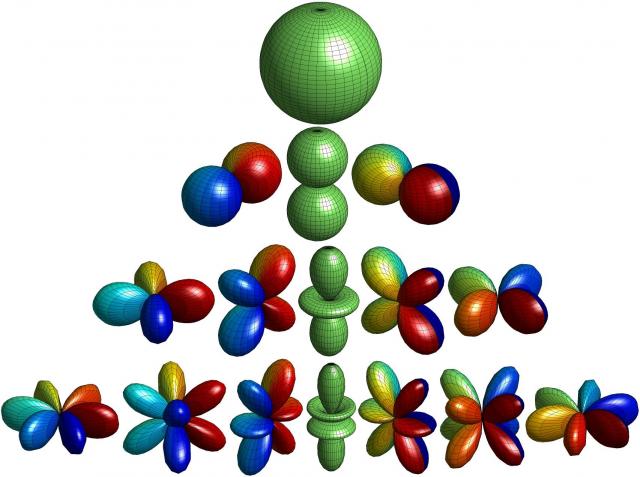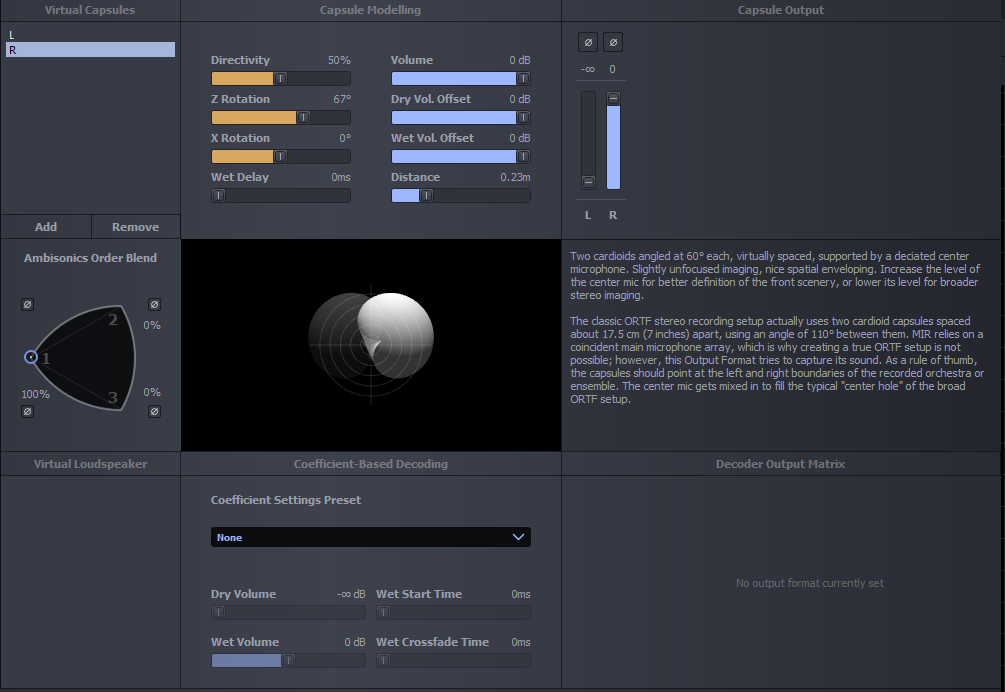Hi Dietz,
concerning: " As soon as you move away the source from the virtual microphones a meter or two, the decoder will already be narrowing the angle between left and right source track, thus "distorting" its imaging again - despite your carefully sculpted mic setup"
I solved that calibration issue by what I wrote above: Adjust the width of the dry signal with MIR switched on with the width, when MIR is switched off by listening (ignoring the width value shown in meters): At which width in MIR do both sound equal broad? This makes only sense if you position the instrument at the right distance from the instrument for this calibration process: Distance Mic to instrument in the MIR positioner during this calibration process should be the real estimated recording distance at which the dry signal was originally recorded. With that calibration procedure I am happy at the moment. Edit: That means, the positioner works fine with this calibration at least in my tests. It reliably adjusts width, dry/wet, and lowpass (if air absorption is switched on). I didn't check predelay (could measure some impulse responses with different distance settings). In my tests, no additional distortion occurs. With distance change other physical laws apply compared to a pure rotation that doesn't change energy: With larger distance the energy intensity (energy per area) of the dry signal approximately decreases with the area of a sphere (different dry wet ratio), high frequencies are absorbed more than lower ones, because this loss is velocity dependend and high frequncies have higher velocity (if air absorption switched on, this is usually modelled with a lowpass filter). Width is more complicated, because high frequncies behave approximately like beams, lower ones more like spheres (consequence of diffraction). Therefore my assumption: If the positioning makes problems then probabely there is a problem with the calibration process as described above.
Edit: And the EQing has to be done well. Otherwise there are distortions in the distance awareness e.g. higher pitch feels more distant. E.g. Piccolo and Eb clarinet high pitch sound too far away without the VSL character EQ but much better with the Teldex presets in Teldex venue. On the other hand I have found, that some optimizations could be done in some cases with the EQ presets. I am currently developing a model based matching EQ primarily for electric guitar und electric bass guitar. But I realized, that it also can find a critical 500Hz issue in the character EQ of the Eb clarinet (VI series). When published in a few months there will be a 1/2 octave freeware version that could save your team a lot of time when doing the EQing (1/3 octave version will be very affordable).
Best regards
vokars


